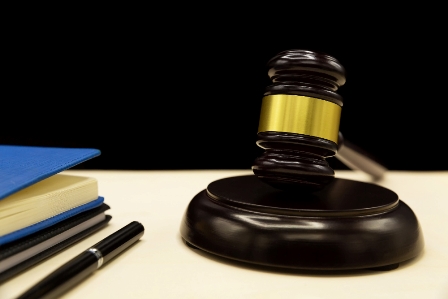Facial Recognition Technology (FRT) triggers have sparked intense debate as their adoption grows across law enforcement, commercial sectors, and public spaces. This comprehensive guide examines the complex legal landscape surrounding FRT triggers, analyzing current regulations, landmark cases, and ethical considerations that shape their use in the United States and globally.
Understanding FRT Triggers: How Facial Recognition Systems Work
Facial Recognition Triggers (FRT) represent sophisticated AI-driven systems that analyze facial features to identify individuals. These systems typically follow a three-step process:
- Detection: The system locates faces in images or video feeds
- Analysis: Algorithms measure facial landmarks and create biometric templates
- Matching: Comparisons are made against databases of stored images
Modern FRT systems employ deep learning techniques that achieve accuracy rates exceeding 99% under ideal conditions, though real-world performance varies significantly based on lighting, angle, and demographic factors.
The Evolving Legal Landscape of Facial Recognition Technology

FRT in Law Enforcement: Current Practices and Legal Boundaries
Police departments increasingly deploy FRT for:
- Identifying suspects from surveillance footage
- Real-time monitoring of public spaces
- Cross-referencing with criminal databases
Legal constraints derive from the Fourth Amendment’s prohibition against unreasonable searches. Courts remain divided on whether facial recognition constitutes a “search” requiring warrants. The 2021 Carpenter v. United States decision suggests FTR may fall under heightened privacy protections.
Privacy Concerns and Constitutional Rights
Civil liberties organizations highlight several constitutional issues:
| Right | Potential FRT Violation |
| First Amendment | Chilling effect on public assembly |
| Fourth Amendment | Warrantless surveillance concerns |
| Fourteenth Amendment | Disproportionate impact on minorities |
Regulatory Frameworks Governing FRT Use
U.S. Regulations and State-Level Legislation
The U.S. lacks comprehensive federal FRT legislation, creating a patchwork of state laws:
- Illinois: Biometric Information Privacy Act (BIPA) requires consent
- California: Consumer Privacy Act (CCPA) includes facial data protections
- Washington: Requires transparency reports from government users
International Regulatory Approaches
Global perspectives on FRT regulation vary dramatically:
- EU: AI Act classifies FRT as high-risk with strict limitations
- China: Extensive deployment with minimal restrictions
- Canada: Proposed Artificial Intelligence and Data Act would ban certain uses
Landmark Legal Cases Shaping FRT Policy
Several pivotal cases have influenced FRT jurisprudence:
- American Civil Liberties Union v. Clearview AI (2022): Settled with restrictions on private sector data collection
- Racial Justice Coalition v. NYPD (2023): Found racial bias in FRT algorithms unconstitutional
- State v. Henderson (2021): Excluded FRT evidence obtained without warrant
Ethical Dimensions of Facial Recognition
Beyond legal requirements, ethical considerations include:
- Algorithmic bias and accuracy disparities across demographics
- Informed consent in public and private spaces
- Data retention policies and secondary uses
Civil Liberties Implications
Studies show FRT deployment affects fundamental rights:
- 42% reduction in protest attendance in monitored areas (Brennan Center 2023)
- 3x higher misidentification rates for people of color (MIT Media Lab)
- Increased self-censorship on social media in jurisdictions with FRT
Balancing Security Needs with Privacy Rights
Potential compromise solutions include:
- Warrant requirements for investigative uses
- Accuracy standards and third-party audits
- Sunset provisions for data retention
Corporate Applications and Liability
Businesses using FRT for security or marketing face:
- BIPA lawsuits with $1,000-$5,000 per violation
- FTC enforcement actions for deceptive practices
- Shareholder pressure to adopt ethical AI principles
Emerging Legal Trends in FRT Regulation
Legal experts anticipate these developments:
- Federal legislation mirroring Illinois BIPA
- Stricter accuracy requirements for law enforcement use
- International data sharing agreements
Expert FAQs on FRT Legality
The legality of owning a forced reset trigger (FRT) varies significantly by jurisdiction. Under current federal law, most FRT devices remain legal, but several states including California and New Jersey have enacted bans. The Bureau of Alcohol, Tobacco, Firearms and Explosives (ATF) continues to evaluate specific models on a case-by-case basis.
As of 2023, FRT triggers remain available through specialized firearms retailers, though payment processors and shipping carriers increasingly restrict transactions. Purchasers should verify:
- State and local regulations
- Retailer compliance with ATF rulings
- Potential civil liability for modified firearms
The ATF has intensified scrutiny of binary triggers since 2022, particularly for:
- Devices enabling full-auto conversion
- Unregistered NFA weapons
- Commercial sellers failing to maintain proper records
Recent enforcement actions suggest the agency is prioritizing cases involving criminal use rather than individual ownership.
While both modify trigger function, key differences exist:
- FRT: Uses forced reset mechanism for rapid fire
- Binary: Fires on pull and release
- Legal Status: Courts increasingly distinguish between the technologies
Industry analysts estimate:
- 200,000+ FRT devices in circulation as of 2023
- Sales peaked in 2021 before regulatory actions
- Secondary market remains active despite restrictions
Exact figures remain disputed in ongoing litigation.
Rarebreed triggers occupy a legal gray area:
- 2023 ATF ruling declared specific models NFA items
- Multiple federal court challenges pending
- Owners in compliant states may retain devices
Consulting a firearms attorney is recommended before purchase.
Key Takeaways on FRT Trigger Legality
- FRT legality depends on jurisdiction and specific application
- Constitutional challenges continue to shape permissible uses
- Businesses face increasing liability for improper deployment
- Global regulatory trends point toward stricter controls
- Technological improvements may address current legal concerns
As legislators and courts grapple with balancing public safety and civil liberties, individuals and organizations should consult legal experts when implementing FRT solutions. The legal landscape continues evolving rapidly, with new precedents and regulations emerging annually.

